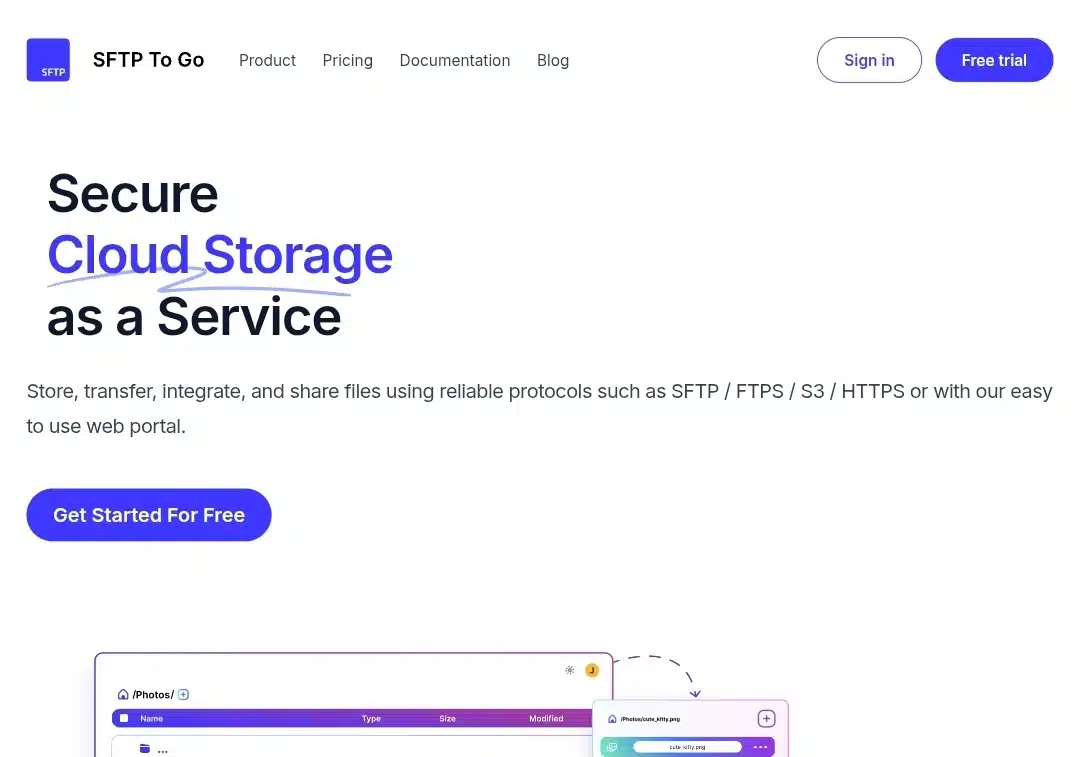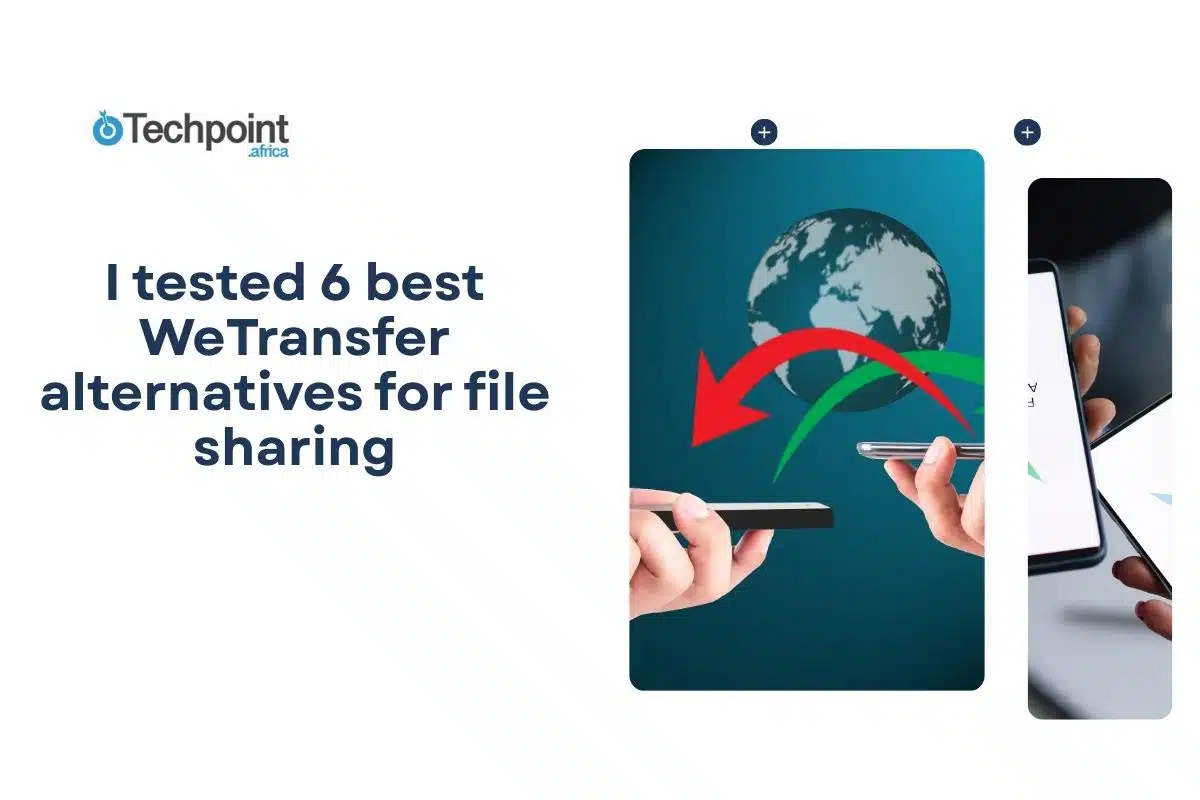I’ve used WeTransfer for years, and for the most part, it’s reliable. However, I recently encountered a few frustrating limitations that prompted me to seek alternatives. The free version now caps each transfer at just 3 GB, limits users to 10 transfers per month, and shortens download links to only three days.
For someone like me, who often sends large videos, photo archives, or project files, these restrictions quickly became a hassle. I wanted a solution that would handle larger files, provide longer link availability, and ideally offer additional features like encryption or faster uploads.
So, I decided to test six popular WeTransfer alternatives. Over the course of a week, I pushed each platform to its limits, noting speed, ease of use, reliability, and security. My findings were eye-opening. Some platforms offered exactly what I needed, while others had unexpected perks I hadn’t considered.
Here’s what I found.
1. Smash

Smash immediately caught my attention because it doesn’t impose strict limits on file size for free users. Unlike WeTransfer, which caps free transfers at 3 GB, Smash allows you to send much larger files without requiring an account. The interface is minimalistic, focusing solely on sending files efficiently. What stood out to me was how it balances simplicity with useful extras like customizable download pages and flexible link management.
Features
- File size limit: Unlimited for free users, ideal for videos and photo archives.
- Upload speed: Consistently smooth; progress bar shows estimated time.
- Link validity: Free links expire in three days; premium allows extensions.
- Sharing options: Download link, email, or QR code.
- Customization: Add a background image or message on the download page.
- Security: Basic protection; premium includes password-protected links.
How I tested it
I ran multiple tests with different file types: a 4 GB video, a 500 MB photo folder, and a 200 MB PDF. Uploads were straightforward, with no interruptions or errors. I sent the download link to my colleagues on different networks, and they reported steady download speeds. Drag-and-drop worked seamlessly, and the platform displayed real-time upload progress. I also experimented with customizing the download page, which was surprisingly easy and added a professional touch when sharing client files.
Pros
- No free file size limits
- No account needed for quick sharing
- Smooth and reliable uploads
- Customizable download page adds professionalism
- Multiple sharing options, including QR code
Cons
- Free links expire after three days
- Limited security on free plan
- Lacks collaboration tools for team projects
Pricing
The free plan offers unlimited file size and three-day link validity. Premium starts at $5/month for extended link duration, password protection, and enhanced customization.
2. TransferNow

TransferNow stood out to me as a straightforward alternative to WeTransfer. Its interface is clean, with a clear focus on quickly transferring files from point A to point B. What drew me in was its flexibility; I could send files up to 5 GB for free, and it offered options for both one-time transfers and longer-term file sharing. Unlike some platforms that feel limited unless you upgrade, TransferNow provides enough functionality to make free transfers genuinely usable.
Features
- File size limit: 5 GB per transfer on the free plan.
- Upload speed: Fast and stable during testing, even for multiple files at once.
- Link validity: Free plan links last seven days; premium users can extend this.
- Sharing options: Email directly, generate a link, or share via social media.
- Security: Optional password protection and encryption for premium users.
- Extra: Ability to track downloads and get notifications when files are accessed.
How I tested it
I uploaded a variety of files, a 3.5 GB video, a 700 MB image folder, and several PDFs totaling 1 GB. The upload speed was consistent, and I could continue working in other tabs without slowing down my computer. I tested sharing via email and direct link; in both cases, recipients could access files without issues. I also checked download speeds on different networks, which remained smooth. I appreciated that TransferNow notified me when files were downloaded, which added a layer of reassurance for sensitive content.
Pros
- Reliable uploads up to 5 GB
- Free links are valid for a week
- Download notifications help track file access
- Multiple sharing options
- Clean, easy-to-use interface
Cons
- Limited file size compared to Smash or MASV
- Some advanced security features require a premium
- Fewer customization options for download pages
Pricing
The free plan allows transfers up to 5 GB with seven-day links. Premium starts at €4.99/month for extended link validity, increased file size, and additional security options.
3. Send Anywhere

Send Anywhere immediately caught my attention for its promise of fast, secure transfers without account registration. Unlike WeTransfer, which limits free transfers, Send Anywhere allows up to 10 GB per transfer for free, making it ideal for sharing large media files. The interface is simple but feels more interactive than some alternatives, and I liked that it offered both web and mobile apps, making it versatile across devices.
Features
- File size limit: Up to 10 GB per transfer on the free plan.
- Upload speed: Consistently fast, with minimal lag even for large files.
- Link validity: Links expire after 24 hours for free users; premium extends this.
- Sharing options: Direct link, six-digit code, email, or app-to-app transfer.
- Security: 256-bit encryption ensures files stay protected in transit.
- Extra: Mobile and desktop apps allow seamless device-to-device transfers.
How I tested it
I uploaded a 6 GB video, a 400 MB photo archive, and several PDFs totaling 1.5 GB. Uploading large files was smooth, with progress clearly indicated. I shared a six-digit code with a colleague on a mobile device, and the download was immediate, without any interruptions. I also tested sending files via link to another computer, which worked flawlessly. Using the desktop app, I could drag and drop entire folders, which saved me a lot of time. Overall, the experience felt fast and reliable, with minimal friction between devices.
Pros
- Generous 10 GB free transfer limit
- Fast uploads and downloads
- Strong encryption ensures file security
- Multiple sharing options, including code and link
- Cross-platform apps make transfers versatile
Cons
- Free links expire in 24 hours
- Premium needed for longer link validity and extra storage
- Interface feels slightly dated compared to Smash or TransferNow
Pricing
The free plan allows transfers up to 10 GB with 24-hour link validity. Premium starts at $5.83/month for a longer link duration, unlimited storage, and added features.
4. pCloud Transfer

pCloud Transfer immediately appealed to me because it emphasizes security while keeping file sharing straightforward. Unlike WeTransfer, which recently limited free transfers to 3 GB, pCloud lets me send up to 5 GB per transfer without creating an account. What I appreciated most was its focus on encrypted transfers, making it feel like a safer option for sensitive files. The interface is clean, and the platform doesn’t bombard you with unnecessary features, which I found refreshing.
Features
- File size limit: Up to 5 GB per transfer on the free plan.
- Upload speed: Smooth and consistent, even with multiple large files.
- Link validity: Free links are permanent for 7 days; you can extend with premium options.
- Sharing options: Generate a download link or send via email.
- Security: End-to-end encryption is available with the free plan, and the premium adds password protection.
- Extra: Simple drag-and-drop interface, no account required, optional custom messages.
How I tested it
I uploaded a 3 GB video, a 500 MB photo folder, and several PDF documents totaling 1 GB. Upload speed was steady, and the platform handled multiple files without glitches. I sent download links to a colleague and tested access from both desktop and mobile browsers; the download speed was reliable across devices. I also explored the encryption feature, which was easy to enable and gave me peace of mind for sensitive files. The drag-and-drop functionality worked flawlessly, and I could see the progress of each file in real-time.
Pros
- 5 GB free transfer limit
- End-to-end encryption ensures security
- No account required
- Reliable uploads and downloads
- Easy drag-and-drop interface
Cons
- Free links are only valid for 7 days
- Fewer customization options for download pages
- Some advanced security and link control require premium
Pricing
The free plan allows transfers up to 5 GB with basic encryption. Premium options start at $4.99/month for extended link duration, password protection, and additional storage features.
5. MASV

MASV immediately stood out as a professional-grade alternative to WeTransfer, especially for sending extremely large files. Unlike most free platforms, MASV is built to handle massive transfers, which appealed to me since I often work with high-resolution video files and large project folders. Its interface is clean, and the platform focuses entirely on speed, reliability, and scalability, which makes it feel designed for serious users rather than casual sharing.
Features
- File size limit: Up to 5 TB per transfer, ideal for massive media projects.
- Upload speed: High-speed transfers optimized for large files.
- Link validity: Default is 10 days; can be extended for paid users.
- Sharing options: Download link or direct email delivery.
- Security: AES-256 encryption and password protection.
- Extra: Detailed tracking and notifications when files are downloaded, useful for project management.
How I tested it
I uploaded a 50 GB video, a 10 GB image archive, and a set of PDFs totaling 2 GB. Uploading such large files could have been risky on other platforms, but MASV handled it seamlessly. I tested download speed on another device, and it maintained consistent performance, even for huge files. The platform also sent notifications when the files were accessed, which helped me track my team’s progress. Drag-and-drop functionality was smooth, and I didn’t experience any timeouts or errors. Overall, MASV made transferring massive files feel surprisingly simple and stress-free.
Pros
- Can handle enormous files up to 5 TB
- Reliable, high-speed uploads and downloads
- AES-256 encryption ensures security
- Notifications and tracking are highly useful
- Minimalist interface focused on efficiency
Cons
- Free usage is limited; a pay-per-use model applies
- Not ideal for casual or small file sharing
- Premium pricing may be high for occasional users
Pricing
MASV is pay-per-use, with transfers charged at $0.25 per GB. It’s ideal for professionals who need occasional or large-scale file transfers without long-term subscriptions.
6. SFTP To Go

SFTP To Go immediately stood out as a more enterprise-focused alternative to WeTransfer. Unlike typical file-sharing platforms, it’s built for secure, scalable transfers rather than casual use. I was intrigued because I often handle sensitive files that require stricter security and reliable long-term storage. While it’s not as flashy as some alternatives, its focus on security, stability, and integration options makes it a compelling choice for business users.
Features
- File size limit: Scalable based on plan, suitable for both small and very large files.
- Upload speed: Reliable and stable, even for ongoing transfers.
- Link validity: Configurable depending on plan and permissions.
- Sharing options: Secure SFTP credentials, allowing controlled access.
- Security: Enterprise-grade encryption, including SSH and SFTP protocols.
- Extra: Can integrate with workflows, automation, and APIs for advanced use cases.
How I tested it
I tested SFTP To Go with a 10 GB media folder, a 2 GB PDF archive, and several smaller project files. Uploads were stable, with no interruptions, even when transferring multiple large files at once. I configured a temporary SFTP account for a colleague, who could access the files securely without complications. Unlike casual platforms, this felt more like a professional-grade tool—you have complete control over who can access what, and link expiration and permissions are configurable. It took slightly more setup than the other platforms, but once configured, it was extremely reliable and secure.
Pros
- Highly secure with enterprise-grade encryption
- Scalable file size and storage
- Reliable for long-term or repeated transfers
- Configurable permissions and link validity
- Integrates with workflows and APIs
Cons
- More complex setup than casual sharing platforms
- No free plan; minimum $50/month
- Less suited for quick, one-off personal transfers
Pricing
Plans start at $50/month, with scalable storage and file size limits. Best suited for businesses or professionals handling sensitive or recurring large file transfers.
Key takeaways
After testing all six platforms, each serves a slightly different purpose, depending on your file-sharing needs. Smash impressed me with its unlimited file size for free users and simple, clean interface. It’s perfect for anyone who frequently sends large files without worrying about accounts or complicated setups, though free links expire quickly.
TransferNow strikes a balance between usability and tracking. Its download notifications and one-week link validity make it ideal for keeping tabs on file access, but the 5 GB limit may be restrictive for very large files.
Send Anywhere stands out for versatility and cross-platform convenience. With 10 GB per transfer and support for desktop, mobile, and app-to-app sharing, it worked smoothly across all devices. Security is solid, though link duration is limited on the free plan.
pCloud Transfer is where security shines for smaller transfers up to 5 GB. End-to-end encryption, ease of drag-and-drop, and no account requirement make it reliable for sensitive files, though free links are limited to seven days.
MASV is in a league of its own for extremely large files. Transfers up to 5 TB with AES-256 encryption make it ideal for media professionals or anyone handling massive projects. The pay-per-use model ensures I only pay for what I need.
Finally, SFTP To Go is designed for business-grade security and scalable transfers. Its setup is more complex, and pricing starts higher, but for sensitive or recurring transfers, it’s extremely reliable.
Ultimately, the best alternative depends on your priorities: ease of use, file size, speed, security, or professional features. Knowing what you value most makes choosing the right platform straightforward.
Wrap up
Testing these six WeTransfer alternatives provided me with a clear understanding of how different platforms address common file-sharing challenges. Some, like Smash and Send Anywhere, focus on speed and simplicity for large personal files. Others, such as MASV and SFTP To Go, cater to professionals who need high security, scalability, and tracking. TransferNow and pCloud Transfer offered a balance between usability and practical features, making them solid options for everyday tasks.
For me, the choice boils down to the type of files I’m sending and how often. Quick, occasional transfers? Smash or Send Anywhere works perfectly. Massive, sensitive, or repeated transfers? MASV or SFTP To Go provides the reliability and security I need. Testing these tools firsthand reinforced that alternatives exist for every scenario, and with a clear understanding of your priorities, you can pick a platform that fits seamlessly into your workflow.











